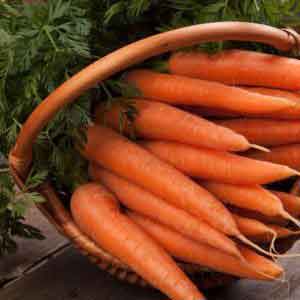After a long season of planting, watering, weeding, mulching, pest control, harvesting and more—the last thing you want is any of your harvest to go to waste. After all, you worked hard to get the greatest yield possible and wasted veggies is no way to end a growing season. So, now that you’re getting closer to harvest, you might be wondering what to do with 30 pounds of cucumbers and basketfuls of dill. Fear not—we’ve got four great ways to preserve your harvest to get you through the winter months.
Fall Harvest Preservation Techniques
Canning and Pickling
Dills and cucumber—a match made in heaven? Definitely. Chances are this combination immediately conjured up the thought of biting into a crunchy pickle. Pickling itself is an excellent way to preserve all sorts of vegetables, including peppers, cauliflower, carrots, cabbage—the list goes on. Putting various and abundant vegetables into containers with vinegar, salt and herbs to be canned is a tradition that can be traced back all the way to 2030 BCE. Canning, however, is a relatively newer technology dating back to the 1700s.
Canning is one of the most versatile ways to preserve a vast array of foods—from fruits to preserves and even soups and stews. It keeps food good for an extended period of time, allowing you to enjoy it at your leisure without worrying about it spoiling.

Both of these processes are relatively simple and can be mastered by just about anyone with some research and a bit of trial and error.
Freezing
In many ways, freezing gets a bad rap due to the perception that frozen food is inferior. In some cases, this may be true, but there are ways to take advantage of how fruits and vegetables react to being frozen for your own benefit—and to preserve any overabundance to enjoy later on.
In fact, some vegetables actually benefit from being frozen if they aren’t going to be eaten immediately. This is true for peas which can lose their sweetness and flavor if not consumed right away. Freezing can also be used for berries, greens, carrots, herbs and more.
Drying
Dried fruits and vegetables are a favorite food for kids and adults alike. The sweetness and flavor gets concentrated, providing a unique experience compared to its fresh form. Some vegetables can be dried off the plant, while some—like beans and corn—do best when dried on the plant and harvested later.
There are a number of ways to dry your bounty, from simply leaving it out in the sun until it shrivels up to using fancy electric dehydrators or even solar powered ones. There are of course ideal methods for every type of produce so be sure to research them individually when you decide to take advantage of dehydration for preservation.
Herbs are one of the most commonly dried items, making them a great candidate for this method when you have a garden full of them.

Cold Storage
The basic process is simple: cure the vegetables (for instance, onions are sun dried to pull out moisture and create a dry outer layer), create an ideal storage area with proper lighting, humidity, temperature and airflow.
Like freezing, this is one of the oldest methods of food preservation. Unlike freezing, the temperatures are nowhere near as cold and the foods stored retain their individual texture and flavor while significantly extending the shelf life.
This method only works with certain vegetables, namely root vegetables like onions, carrots, potatoes and more. Gourds, tomatoes and cucumbers are also good candidates.

Each method of preservation has its own unique advantages and disadvantages, as well as their specific steps and processes to properly pull off. If you are tired of wasting vegetables you so lovingly cared for and grew, it’s a smart idea to learn at least one way to extend their shelf life.